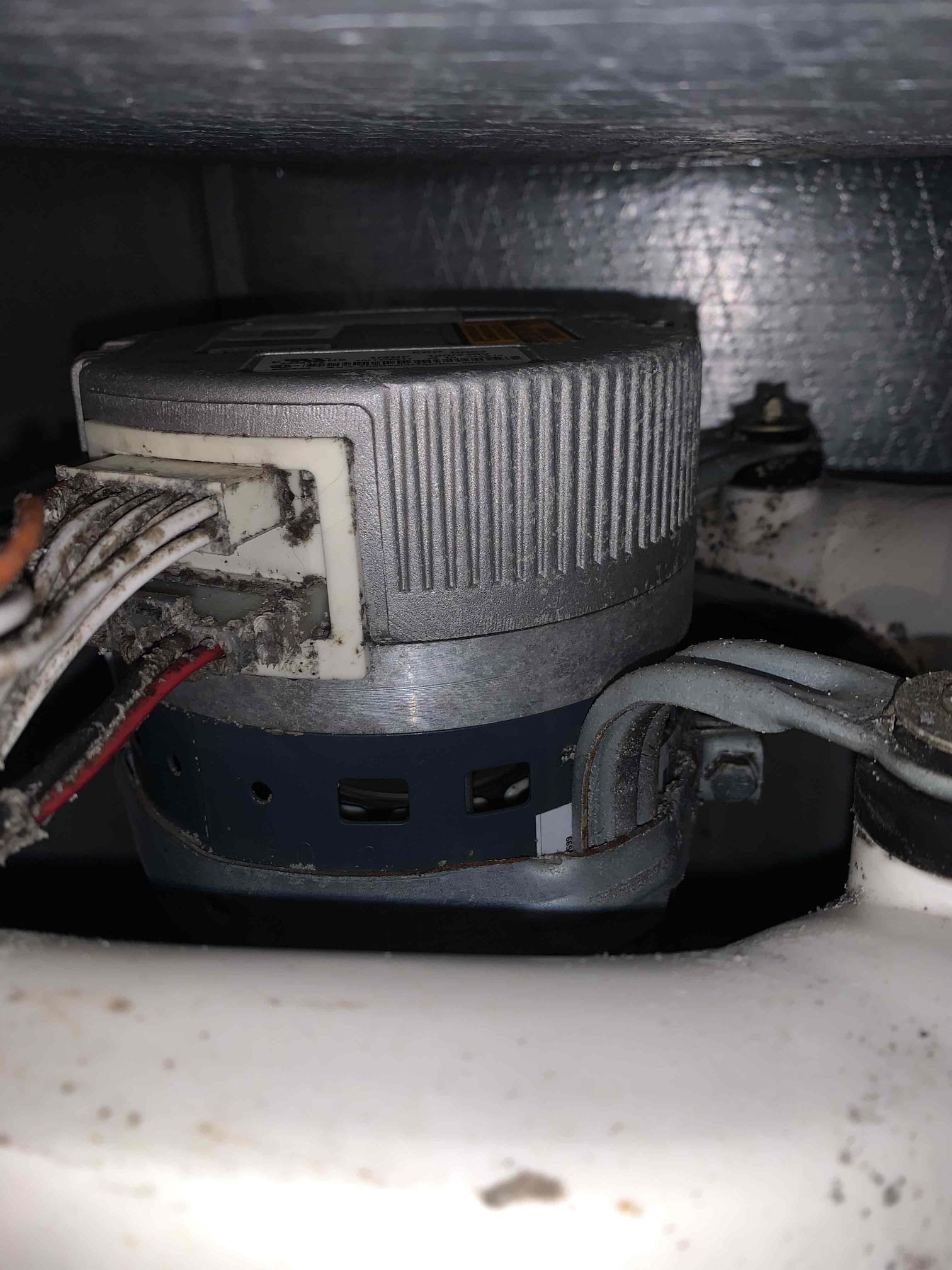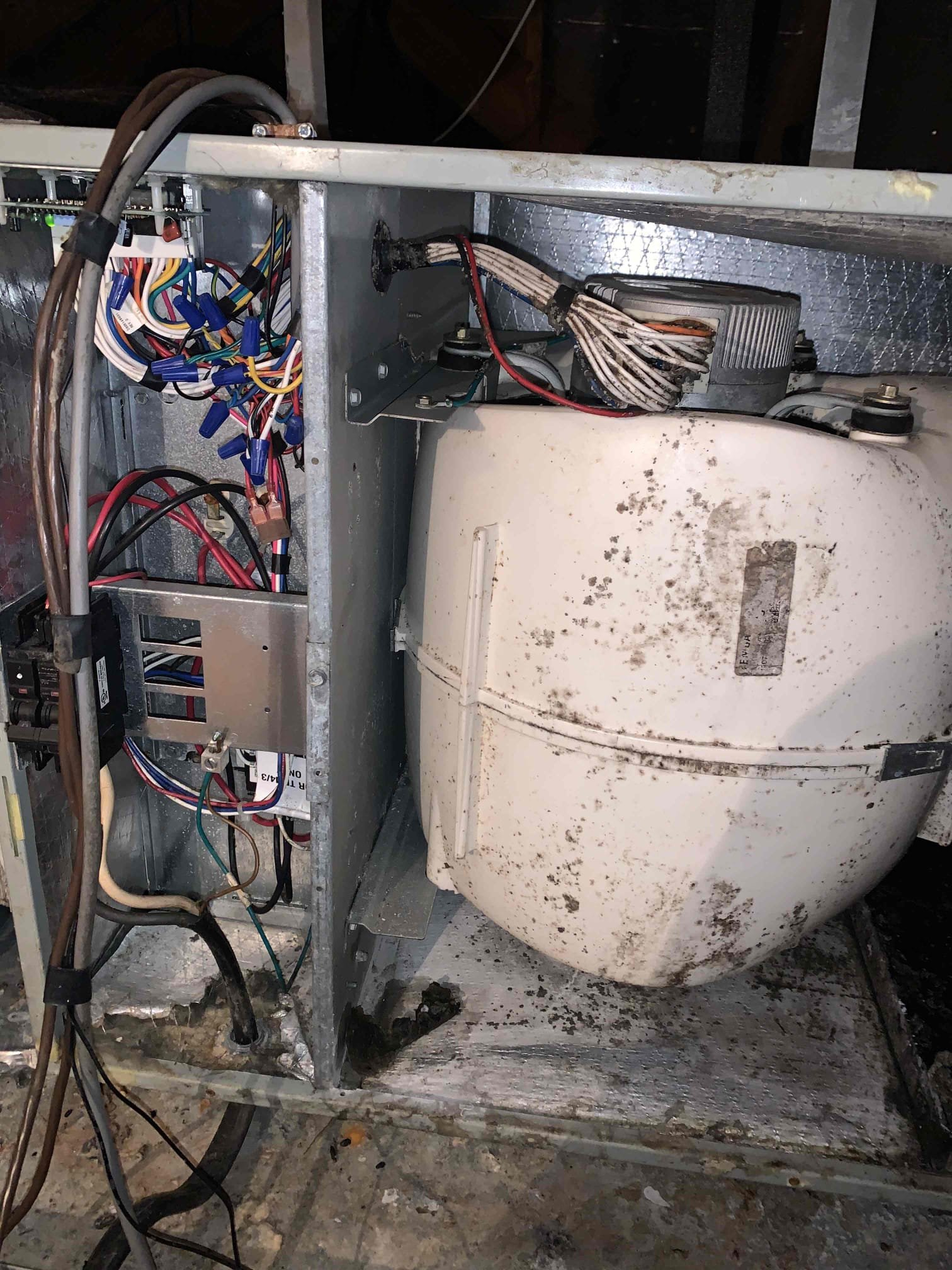Preformed Dryer Vent Cleaning Preformed single system heat maintenance on 2018 heat pump. I tested all electrical components on inside air handler. All electrical components tested within manufacturer specifications. I proceeded to the outside to test all electrical components. All components tested within manufacturer specifications. The only concerns I found were the amps were starting on the high side of the start amps for the compressor. 60/72 amps. The unit could benefit from adding a hard start kit to help bring the amps down. Also I noticed he system doesn’t have surge protection. Unit was cooling upon departure.


Ac preventative maintenance on a heat pump from 2017, using air filter 20*23*4. Customer stated that the thermostat will reboot itself at midnight but besides that it’s been working properly and would like to open up the dampers to the master bedroom and his office because they were partially closed to help push more air towards the other side of the house but they have a window unit now that’s keeping that side of the house comfortable. As far as the thermostat rebooting itself at midnight I didn’t see any loose wires or bad connection or bad programming. Customer stated that awhile back they had a problem with the electricity in the house where the lights were pulsing throughout the house but he called his electric company and they fixed the issue. During my inspection I checked electrical connections and components, treated the drain line, checked temperatures, and tested overall performance of the system. I did find the capacitor to be weak and the contactor to have significant
Demand call: gas system from 2016 not cooling. Upon arrival a contractor was working in the house the homeowner wasn’t present. The contractor said it hasn’t been working for a month and that he recently changed the air filter thinking that was the problem. During my inspection I sent videos to the homeowner that show his compressor not running and the multiple times I tried to get it started. Ultimately I found the compressor windings to be bad. I made the customer aware of how severe the situation is and how we can solve it. Customer requested an estimate for a full system replacement but wants the basic heating and ac system due to the house being a rental. Sent customer the estimate and wanted me to contact him tomorrow after he talks to his wife about the situation tonight. System is currently not running or cooling.
Arrived on site and found condenser fan running without compressor. Tested capacitor and found it to have no measurable capacitance. Found drain line to be clear. Condenser coil was extremely dirty. Recommended cleaning to promote heat exchange and reduce stress on the system. Found extremely dirty blower wheel with a large amount of bacterial growth on the blower wheel housing. Discussed with homeowner options for getting the unit back up and running , as well as cleaning the blower wheel and housing. Homeowner elected to replace capacitor and go forward with maintenance. Performed maintenance. Customer did not have filters to change at this time, but stated she would change them soon. 1. Visually inspected condenser coil for debris/ dirty. 2. Inspected condenser fan motor. 3. Inspected condenser fan blades. 4. Inspected/ cleaned wiring connections. 5. Tested compressor/ condenser fan motor capacitor. 6. Checked compressor amp draw. 7. Checked condenser fan motor amp draw. 8. Inspec
I performed a 2 system safety check on 2 gas systems. The furnaces are from 2010, evap coils are 2017 and 2021, the outdoor units are 2010 and 2018. I checked amps, capacitors, filters, electrical, drains, and safeties. The systems are performing to the best of their abilities in their current state. The downstairs has a 5 ton coil with 4 ton outdoor unit, and the upstairs is a 4 ton coil with a 3 ton outdoor. I noticed that the electrical for the upstairs unit is all worn. The capacitor is reading 35/45 on the compressor side, the contactor is ohming out of typical range, and it is starting with high amps. The upstairs outdoor unit needs a chemical bath to ensure it can move air properly. The downstairs outdoor unit is pulling too many amps during start up, also. I found that both blower motors are matted in dust. This results in the motors working harder to perform their jobs and can result in premature failure. I proposed options to address these issues.
Performed two system maintenance. Nanny/Mrs Beatriz let me in. Immediately notice return air filter rack in lower part of wall in foyer/front entry. Pulled out extremely dirty filter. Both systems have 4 inch high efficiency filters at return air plenum filter rack. So no need for 1 inch filters in walls. Replaced and dated filters 20x25x4 in south side main system thermostat and 16x25x4 in north side/master bedroom suite thermostat. Treated drain lines and insured no restrictions. During drain line/fittings inspection found 3/4 elbow/coupling not glued properly on one end where it ties into other system drain lines. Made courtesy repair and glued fitting properly and supported properly with plumbing strap.. and to exposed suction lines at air handlers by taping up existing Armaflex insulation properly. Also made courtesy repair to big air leak at front access of Goodman air handler where connection to return plenum is made. Recommend shut off valve and float switch on primary drai
1. Visually inspected condenser coil for debris/ dirty. 2. Inspected condenser fan motor. 3. Inspected condenser fan blades. 4. Inspected/ cleaned wiring connections. 5. Tested compressor/ condenser fan motor capacitor. 6. Checked compressor amp draw. 7. Checked condenser fan motor amp draw. 8. Inspected / replaced return filter. 9. Inspected return plenum for debris/ dirty. 10. Inspected evaporator coil. 11. Inspected blower motor/ blower wheel. 12. Checked blower amp draw. 13. Measured temperature differential from supply to return. 20 degrees measured. 14. Inspected drain lines and treated to prevent blockages 15. Washed condenser unit to promote heat exchange Was not able to offer duct cleaning as the vent was on the roof with a very steep pitch. Advised by office not to cut it open to see if it was blocked. Found big air leak from large deformation of the bottom of the unit that was hastily taped up. Found high start amps on compressor. Sealed coil to prevent air from leaking
Performed single system cooling maintenance on 2018 heat pump. I checked amps, capacitor, filter, drains, cleanliness, refrigerant temperature, and temperature differential. The system is performing within manufacture specifications. The son spoke to me about the room still being warm. I advise that a return be installed in that to help cycle the heat out. If issue persists after return installation, it is advised to add more insulation in the attic space. The evaporator coil has minor oxidation and could use light cleaning to allow better temperature transfer. This would restore some of the system’s lost efficiency.
We arrived at our clients home for the main unit not cooling properly. The homeowner showed us the thermostat and said that the unit would run continuously without dropping the temperature in the home. We spoke with Will over the phone and he informed us that the indoor air handler had been replaced last year with some additional duct work done in the entire home. We first proceeded into the attic and verified the unit was on and calling to cool. We then went outside and tested all the electrical components on the 2009 heat pump. It has had multiple parts replaced already. Everything is currently testing within manufacture specification's with the exception of the defrost control board. It has a significant burn mark from overheating on it. When we read the refrigerant pressure we immediately found the unit to be nearly empty of Freon. We proceeded back inside and preformed a courtesy leak search in the air handler. We found the leak in the middle of the evaporator coil. I attempted t
I performed visual inspection of HVAC system and found the thermostat shutting off due to a shorted contactor for the heat strips. Contactor was replaced and the customer was reimbursed for the difference in cost. No further issues at this time.
I performed visual inspection of HVAC system and found the thermostat shutting off due to a shorted contactor for the heat strips. Contactor was replaced and the customer was reimbursed for the difference in cost. No further issues at this time.
I thoroughly examined the cleanliness of 2 gas systems. Systems are from 2012 and the manufacturer is carrier. 1. Both systems have excessive dust build up within the ducts and plenums. 2. The blowers have minimal build up and should be fine for another year or two. 3. Both systems have poor filtration and this allows dust to bypass the filter. 4. The downstairs system has a compromised emergency drain pan. This makes it a major risk for causing water damage. 5. I observed that neither system has water safety switches and having them is highly recommended. 6. The upstairs system is short 600CFM on return air. This causes unnecessary wear and tear on your blower motor, heat exchanger, evaporator coil, and compressor. This wear leads to premature failure in major components.
Checked refrigerant pressure and attempted to force the outdoor into defrost and it would not cycle. Defrost board is faulty and needs replaced.
Performed operational inspection of air handler and systematic check. We found out that there was a short to the thermostat when the system operated under electric heat strips. The holding coil on the contactor would slightly short to ground without popping the fuse but would cycle the thermostat off and on when in defrost mode.